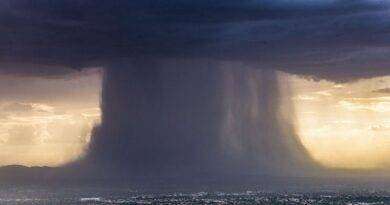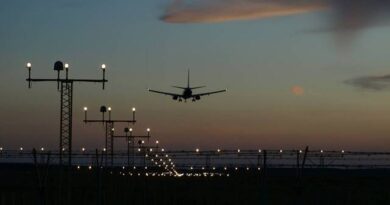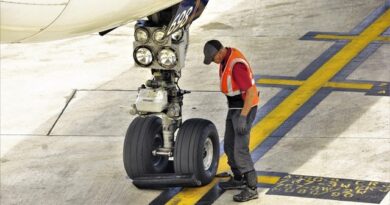Drones and Usage Areas
We will try to build a frame to the questions of what is drone? What are the drone usage areas and what may be the possible innovative areas for drones in the future especially in the aviation field?
Firstly, let’s start with definition. A drone is an unmanned aircraft or ship that is guided remotely or autonomously. On that point let’s clarify the difference between drone and UAV. UAV abbreviation refers to unmanned aerial vehicle. That means any pilotless aerial vehicle is an UAV. And in recent past UAVs are widely associated with military purposes while drones are commonly used for civilian purposes.
Let’s continue with usage areas of drones. After being affordable for both civilian and industrial users the areas that drones are involved grew incredibly fast. From film making to law enforcement there are many fields that drones are in active usage. Let’s detail some of them.
Drones for Fire Fighting:
Let’s start with inspection benefits of drones. By quick deployment of drones to fire location, fire fighters are able to understand and adapt to the situation quickly. Attachable thermal cameras on drones improves the vision especially under smoke condition. All these data improve the chance of success and ease the management of the situation.
Moreover, drones are able to extinguish fire and it has an advantage over fire truck ladders, they are way more dynamic. Ladders can reach around 100 ft on the other hand, the prototype drone of Latvian company Aerones can reach up to 984 ft.
Drones for Search and Rescue:
With the advantage of lightweight of drones and the high resolution cameras attached (sometimes with infrared and night vision) they are key elements for search and rescue especially in vast areas like mountains, deserts, valleys… In addition, the data recorded by the camera of the drone eases the further research and investigation.
Drones in Agriculture:
It is fair to say that agriculture is one of the most suitable and beneficial field for drone operations. By using drones, farmers can monitor crop growth, plan more efficient harvest season. This improves security, eases soil assessment and more…
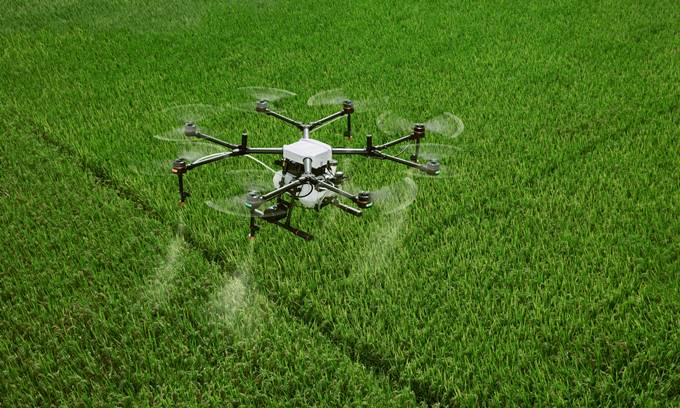
Drones for Filming and Taking Photography:
Drones are commonly used for filmmaking and photography since they provide elevation and more flexible movement which ground cameras don’t have. If you are a cinema fan you may have recgonize that number of drone based scenes are more common especially after 2000’s. According to a drone company called Aerobo, Skyfall (click) was the first movie that used a drone for up-close action scenes.
Moreover, drones in photography made a big impact in the field. It enables a super freedom for photographers in terms of vision. By a drone you can shot a stunning sunset view of a bay from 200ft. Early drone technology received lots of criticisms about the image quality when compared with the SLR/DSLR cameras, but with the improvements on that field now drones are taking high quality images. The list goes long as we can add, drones for law enforcement and border protection, drones for investigation, drones for cargo transportation, drones for geographic mapping, drones for wildlife monitoring and more…
Let’s come to our destination. What are the helpful implementations of drones in aviation field? What are the affects?
Every innovative idea starts with a question. What problem will be solved by that?
Drones in Aerodrome Environment
ILS and runway lightning systems attached to aerodromes are checked and calibrated periodically and that operation is done by the help of flight check operations. This brings some workload, greenhouse effect as well and high operation costs. On that issue flight check with specialized drones are possible good alternatives (further reading Canard drones). Drones may reduce the amount of time by shortening pattern turns and no doubt that they have a positive impact on greenhouse gases and operational costs. Similarly, with the advantage of flexibility and data record, drones may be used for routine runway inspections on daily basis.
Walk around check
Another possible implementation is walk around check with drones. There is a visual control procedure for planes before takeoff and after landing. As shown in the image maintenance personnel or pilot checks the plane visually to ensure that the aircraft is unharmed. In this point drones may bring benefits to the procedure by data recordings. By these recordings the risks of human mistakes may be minimized and a valuable data for statistics can be obtained.
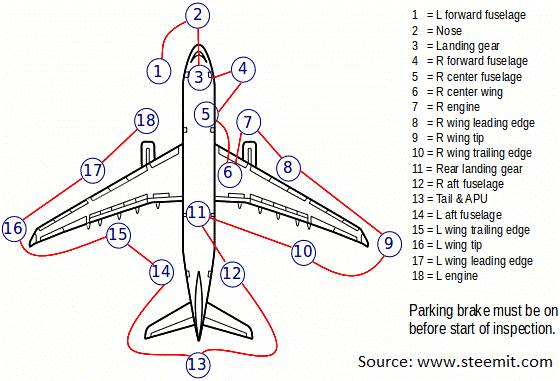
Bird control is a vital issue for ATM at aerodromes. According to ICAO bird strikes threaten aircraft safety, and 90% of them happen during take-off and landing. For this problem, using specialized drones delivers a good solution and improves safety.
“We currently operate our RoBird in a variety of places, but taking the step towards full integration within daily operations at an airport is huge,” said Clear Flight Solution CEO Nico Nijenhuis. “For years, there has been a lot of interest from airports. To now officially start integrating our operations at a major Canadian airport is absolutely fantastic.”
These drone applications are already existing or will be implemented in the near future.
We may add as ideas for discussion that drones may be used in deicing operations, baggage transportation in apron and may be included to the ARFF (Aircraft Rescue & Fire Fighting) inventory or even in the defense against unauthorized drone incursions to airport environment…
For more articles click.
